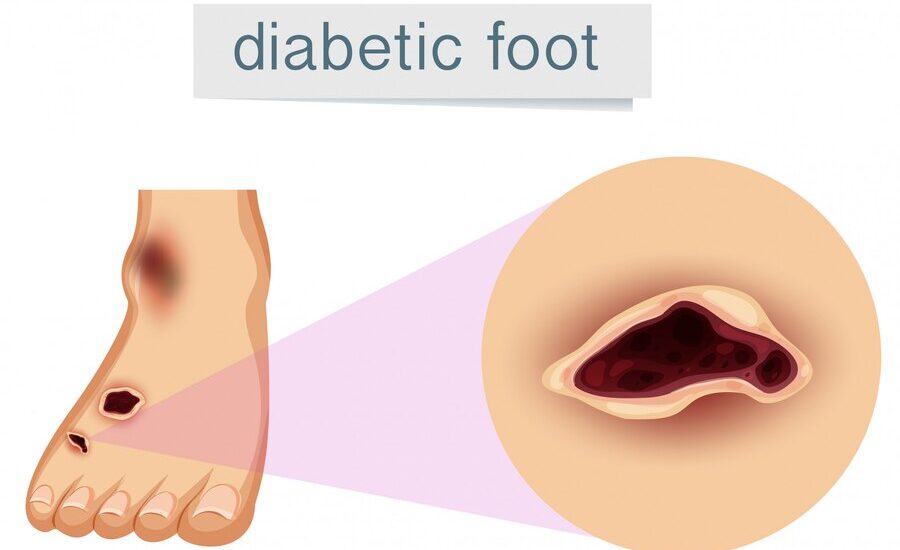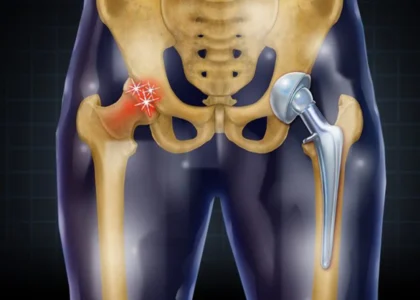Among the many complications that can arise from diabetes, one often overlooked yet significant concern is diabetic foot. Understanding the causes, recognizing the symptoms, and exploring treatment options for diabetic feet are crucial for individuals navigating the challenges of diabetes. Dr Swapnil Verman offers various treatment options including custom-made insoles for diabetic foot treatment in Mathura.
In particular, we’ll explore the importance of custom-made in managing diabetic foot complications, with specialized models catering to sensitive and fragile feet.
What is Diabetic Foot?
Diabetic foot refers to a range of complications affecting the feet that can arise in individuals with diabetes. Diabetes, a chronic condition characterized by elevated blood sugar levels, can lead to various health issues, and the feet are particularly vulnerable. The primary factors contributing to diabetic foot complications include peripheral neuropathy, poor circulation, and a heightened susceptibility to infections.
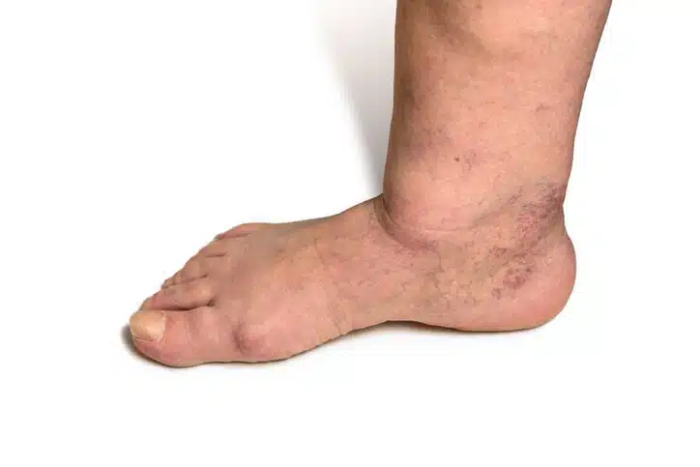
Causes of Diabetic Foot
- Peripheral Neuropathy:
Diabetes frequently results in peripheral neuropathy, a condition marked by damage to the nerves, especially in the limbs. Affected foot nerves can cause tingling, numbness, or loss of feeling in the affected area. Because of their diminished senses, people with this condition may not experience pain or discomfort, which can lead to the formation of ulcers and sores.
- Poor Circulation:
Vascular problems brought on by diabetes might cause inadequate blood flow to the extremities. The body’s capacity to heal and fight infections is hampered by reduced blood flow, which leaves the feet more vulnerable to injury and takes longer to repair. In extreme circumstances, insufficient blood flow can cause necrosis and tissue damage.
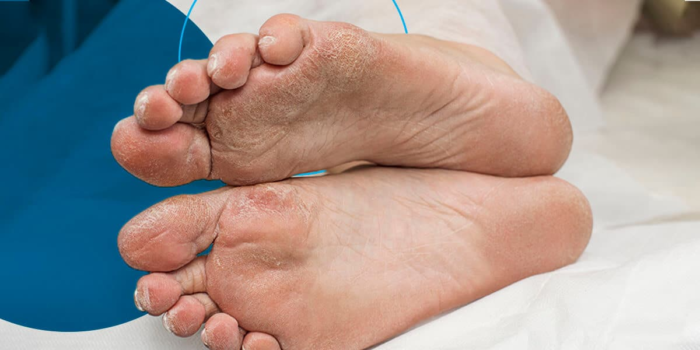
- Susceptibility to Infections:
High blood sugar weakens the immune system, increasing the risk of infection in those with diabetes. In the diabetic foot, small cuts, blisters, or sores can develop into dangerous infections. Ulcers and infections can become more likely to occur when neuropathy, poor circulation, and weakened immunity are present.
Symptoms of Diabetic Foot
Recognizing the early signs of diabetic foot is essential for timely intervention and prevention of severe complications. Common symptoms include:
- Foot Ulcers:
Open sores called ulcers can appear on the feet and are frequently the result of accidents that go undetected because of decreased sensitivity. If left untreated, these ulcers can become infected and result in more serious consequences.
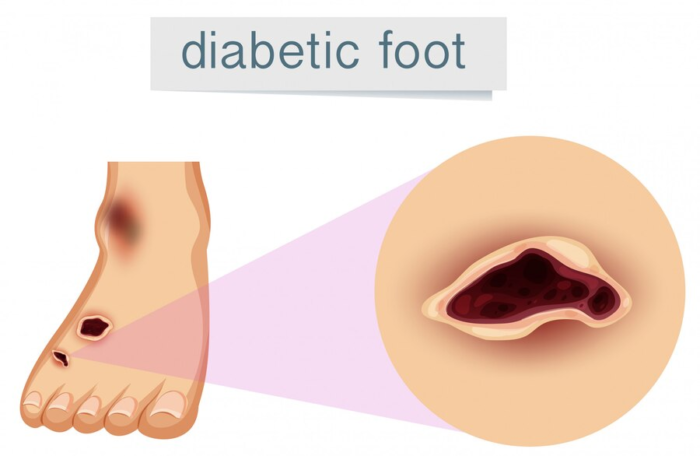
2. Skin Changes:
Variations in the texture, colour, and warmth of the skin could be signs of impaired circulation. The toenails may swell or change shape, and the skin may get dry and cracked.
3. Peripheral Neuropathy Symptoms:
A burning, tingling, or numb feeling in the feet is a sign of peripheral neuropathy. The fact that these symptoms could develop gradually emphasises how crucial it is for diabetics to have routine foot exams.
Diabetic Foot Treatment in Mathura
Managing diabetic foot involves a comprehensive approach that addresses the underlying causes and prevents complications. Primary treatment options include:
- Custom-Made Insoles:
Custom-made insoles can help address diabetic foot issues. These insoles are designed specifically to fulfil the unique needs of individuals with diabetes through a tailored and supportive approach. Models that are made for fragile and sensitive feet offer better protection and comfort. Individuals with diabetic foot concerns must consider these specialized insoles as part of their comprehensive approach to foot health.

Dr. Swapnil Verman, recognized as the best ankle and foot specialist in Mathura, offers custom-made insoles for diabetic foot treatment in Mathura.
- Blood Sugar Control:
It is essential to maintain ideal blood sugar levels to avoid and treat these issues and for diabetic foot treatment. To achieve glucose control, lifestyle modifications such as frequent exercise and a nutritious diet, as well as regular monitoring and medication adherence, are essential.
- Wound Care:
Infections can be avoided with proper wound care. Keeping the affected region dry and clean, cleaning wounds as soon as possible, and using antiseptic solutions are all essential components of diabetic foot treatment and management.
- Footwear and Foot Hygiene:
Two crucial preventive actions are wearing appropriate footwear and maintaining good foot hygiene. Injury risk can be decreased with supportive, protective shoes that fit well, and early detection of problems can be facilitated by regularly visiting your doctor.
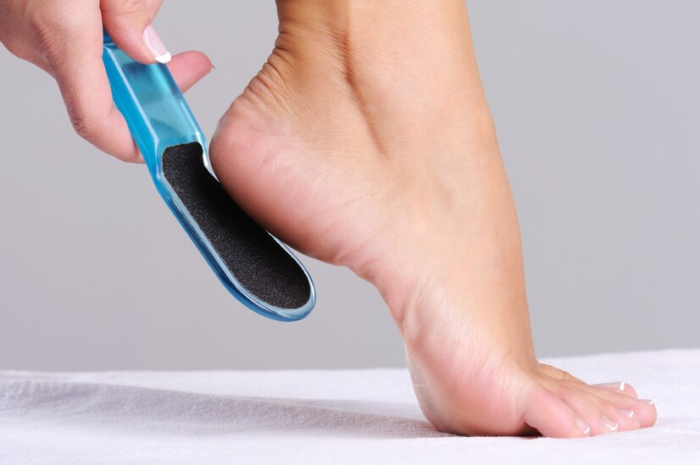
- Vascular Interventions:
Diabetic foot treatment also includes performing vascular procedures like bypass surgery or angioplasty, in cases of severe circulation issues to restore blood flow to the afflicted areas.
Conclusion
Diabetic foot is a dangerous and sometimes crippling side effect of diabetes that needs to be managed. People with diabetes can take charge of their foot health by being aware of the reasons, identifying the symptoms, and choosing appropriate therapy. A complete strategy to avoid and manage diabetic foot issues should include regular monitoring, a healthy lifestyle, and collaboration with healthcare specialists.
Dr. Swapnil Verman, the best orthopaedic surgeon in Mathura, with his specialized focus on foot and ankle problems, employs a multifaceted approach to address diabetic foot concerns.

